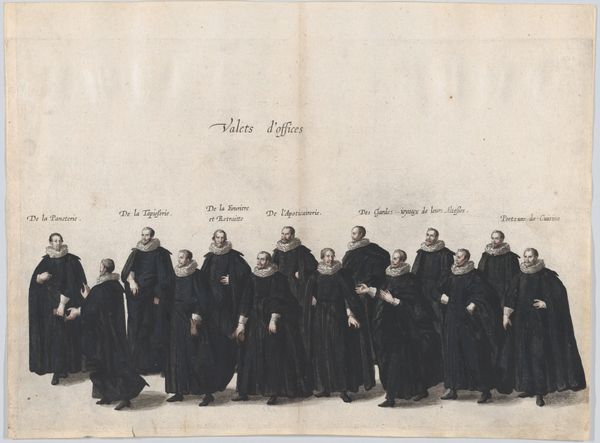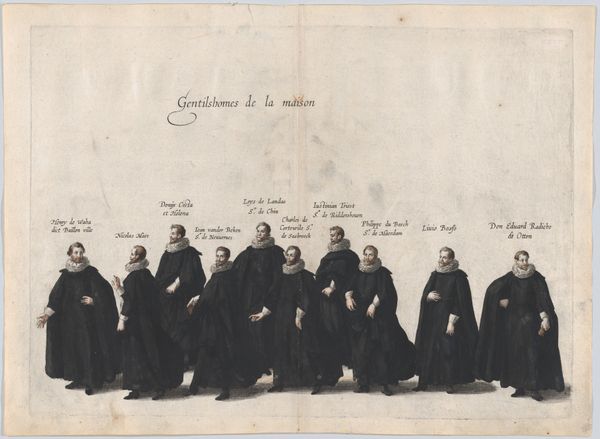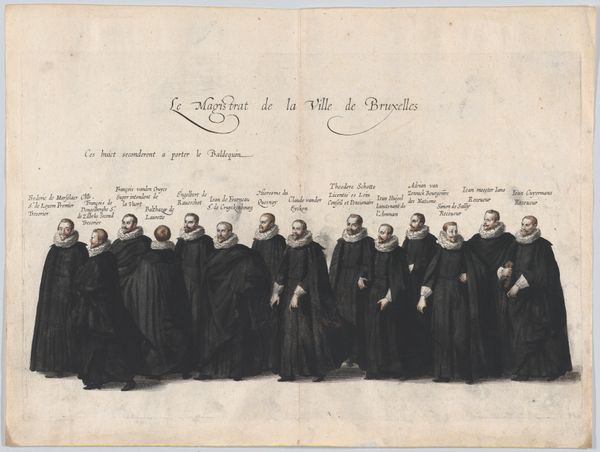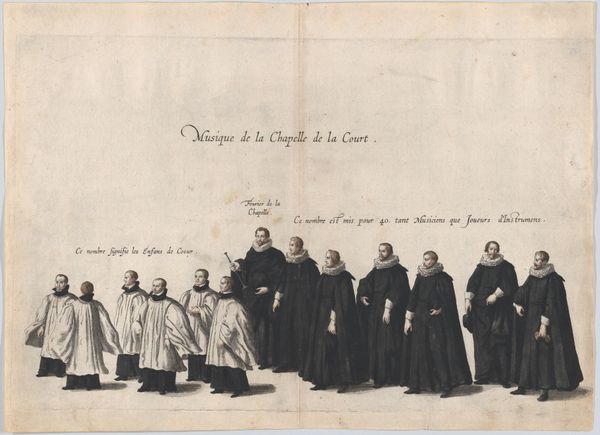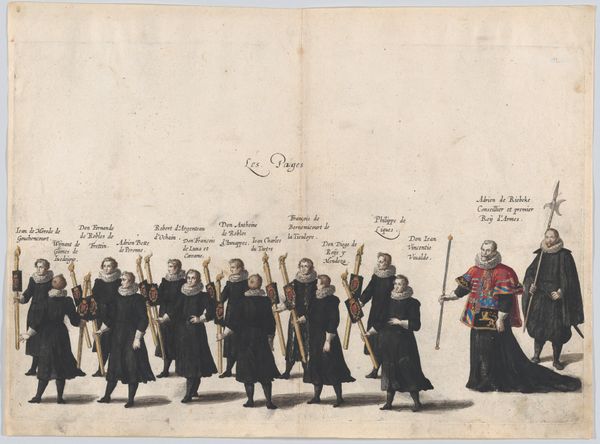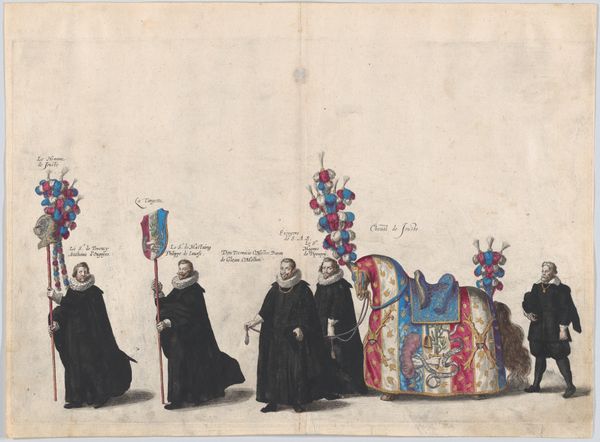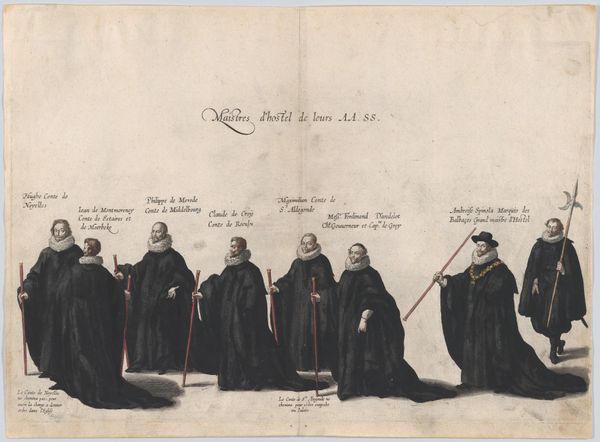
Plate 14: Valets marching in the funeral procession of Archduke Albert of Austria; from 'Pompa Funebris ... Alberti Pii' 1623
0:00
0:00
drawing, print, etching, engraving
#
portrait
#
drawing
#
baroque
# print
#
etching
#
men
#
history-painting
#
engraving
Dimensions: Sheet: 11 3/16 × 15 1/4 in. (28.4 × 38.7 cm) Plate: 9 13/16 × 14 15/16 in. (25 × 37.9 cm)
Copyright: Public Domain
Curator: Immediately, what strikes me is the rather bleak uniformity of these figures; they seem to fade into the ground, shrouded by an imposing shadow of mourning. It makes me wonder, what collective psyche lies buried in scenes such as this one? Editor: It’s a fascinating visual document of a very specific moment. The piece you’re observing is called "Plate 14: Valets marching in the funeral procession of Archduke Albert of Austria; from 'Pompa Funebris ... Alberti Pii'." It's an etching and engraving made by Cornelis Galle I in 1623. Curator: "Valets d'offices," the inscription reads, with slight variations over each group; their office and duty inscribed over their figures, and therefore etched into our minds. Notice how the symbols of service and death converge, transforming individual identities into uniform bearers of solemn tradition. Editor: And they are uniformly somber. This print offers an almost forensic record of status and function within the Archduke's retinue. They march like automatons, their individuality submerged by the prescribed order of grief and protocol. The details of dress, posture, and facial expression speak volumes, though perhaps not willingly. Curator: Indeed, it reflects how symbolic actions can become almost a second skin; imagine the emotional and psychological cost of carrying out such elaborate rituals. The symbols speak not just of Albert's power in death, but also of a system of inherited, unchanging social roles—a cultural memory etched onto each man and subsequently onto the print itself. The psychological weight is evident in every stride. Editor: In an odd way, the rigid formality renders it strangely… humorous? I picture a meeting afterward: "Right lads, same time next week for old Ferdinand!" There’s a theatrical absurdity in such pageantry that both celebrates and satirizes power, don't you think? Almost a historical "Weekend at Bernie’s," if you will. Curator: Well, it certainly gives cause for reflection about our modern rituals and inherited roles. We each bear our symbols, after all, even if we feel we shed the garments of social class. Perhaps death, or rather its trappings, has a more universal appeal to the human psyche than we are keen to admit. Editor: Perhaps, and perhaps not. Though this memento mori speaks powerfully about death and social structure, for me, I can’t shake off the idea that somewhere in this long line of marching men there’s someone just trying to avoid treading in the footsteps of the man in front. I leave you with that.
Comments
No comments
Be the first to comment and join the conversation on the ultimate creative platform.
